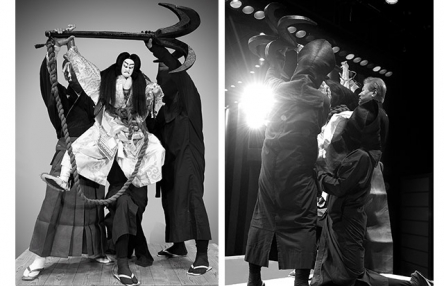
- TRADITION
- 2021.03.10
Kimono Patterns ―33
Kibutsu: Six unique patterns based on everyday items
From ancient times, beautiful artistic patterns on kimono have reflected the Japanese people’s delicate senses towards the changing seasons and how social conventions in the country have changed through its history.
This series will take a look at various types of kimono patterns, from those that can be worn year-round to those for special occasions, with a special focus on summer-themed patterns. We will explore the meanings behind the designs as well as insights into styling a kimono attire.
Kibutsu pattern
Kibutsu pattern is a collective term for designs based on tools and everyday items, such as fans, letter boxes and musical instruments (see article here). Items with aesthetic shapes have long been used as patterns on kimono and obi.
Kibutsu patterns can be used alone or in various arrangements. Sometimes they are used in combination with seasonal plants and flowers.
In this article, we will take a look at six kibutsu patterns including popular ones and those brought in from China.
Suzu (Bell)

Suzu, or bells, have long been used for festivals and Shinto rituals. They later came to be used as musical instruments. Thanks to their beautiful shapes, they came to be utilized as motifs on crafts and fabrics, sometimes alongside tsuzumi (Japanese hand drums, see article here) and eboshi (headgear worn by Japanese court nobles).
Today, the pattern is often seen on komon (daily wear) kimono, some-obi (dyed obi), children’s garments and family crests.
<Recommended season for wearing this kimono pattern>
All year round
Kichou (Screen)

Kichou, or partitioning screens, are made into patterns. Kichou consists of a long piece of wood placed across two standing pillars, with a cloth draped over the wood. It is often seen on picture scrolls from the Heian period (794-1185). The cloth is usually decorated with colorful patterns of flowers, birds and plants.
<Recommended season for wearing this kimono pattern>
All year round
Yatsuhashi (Zig-zag bridge)

Yatsuhashi, or zig-zag bridge made of short pieces of wood that are placed cross narrow rivers or small ponds, are also made into patterns.
The photo shows a Yatsuhashi pattern with flowing water and chrysanthemum flowers motifs.
<Recommended season for wearing this kimono pattern>
All year round, summer
Kazura-obi (Noh headband)

Kazura-obi refers to a piece of cloth used as a head accessory in Noh plays for actors playing female roles. The cloth is around 4cm wide and 2 meter-long, and it is wrapped around the actor’s head with a long piece hanging in the back. It has embroidered patterns shown on the forehead and the draping parts, and is worn with karaori (a type of weave; the term also refers to gowns worn by nobles and female roles in Noh plays) .
Kazura-obi patterns usually depict the beautiful, ribbon-like cloth in lively lines.
<Recommended season for wearing this kimono pattern>
All year round
Fubako (Letter box)

Fubako is a box used to keep letters and other related items. The name referred to a box used to carry reading materials in ancient times, but after the middle ages, the term came to be used to refer to rectangular-shaped boxes for delivering letters and other items back and forth.
In the Edo period (1603-1867), well-decorated fubako with gold-lacquer and mother-of-pearl became wedding furnishings, and various sizes were manufactured depending on their usages.
<Recommended season for wearing this kimono pattern>
All year round
Makimono (Scrolls)

An auspicious symbol, makimono is included in Takarazukushi (treasure) patterns (see article here). Best suited for celebrations, the kimono in this photo shows a variety of treasure motifs on a makimono pattern.
Makimono patterns are based on scrolls with picture and scriptures that have long been used. Patterns depicts silk scrolls are called makiginu.
<Recommended season for wearing this kimono pattern>
All year round

Kaku to kisetsu ga hitome de wakaru―Kimono no mon-yo
(Kimono Patterns―A guide to their rank and seasons )
All-color Revised Edition on sale March 18, 2021
Supervised by Kenzo Fujii
(Sekai Bunka Publishing, in Japanese)
Featuring over 300 kimono patterns including the ones introduced in this story, the book helps readers learn about the history and meanings of kimono patterns through a rich variety of photos. Kimono and obi can be categorized into kaku (rank) depending on its material and patterns, and different occasions call for combinations of kimono and obi of the appropriate ranks. A practical and entertaining guide for all kimono lovers, the book gives useful tips on common confusions related to the ranks and seasonal categorizations of patterns, as well as numerous kimono styling examples.
Available at bookstores in Japan, or on Amazon and other online stores. Can also be ordered at bookstore counters in Japan with no shipping charges (the service may be unavailable at some stores).






